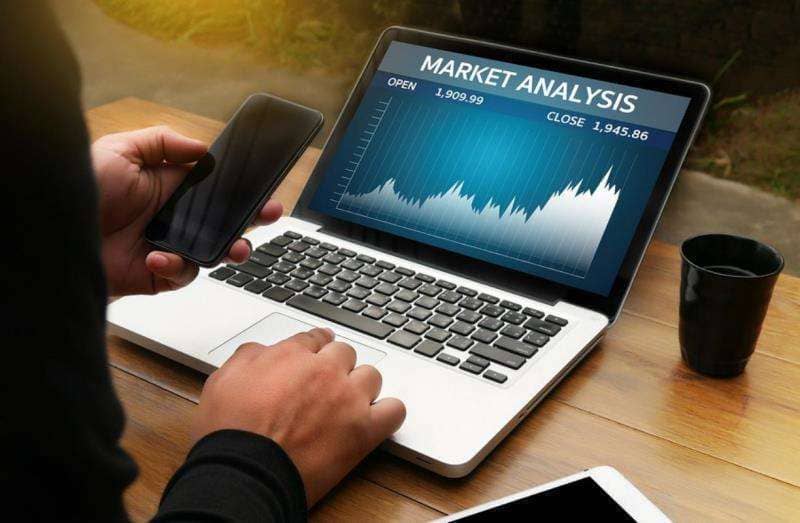Content
ADTV is a technical indicator employed by investors or traders, which refers to the average number of shares of a specific stock that trade in a single trading day. The number of shares exchanged each day is known as the daily volume, and the average daily volume may be calculated by averaging the daily volume across a period of days. The average daily trading volume could be determined over any time frame, such as the last five or ten days. The average trading volume over a period of 20 or 30 days, one quarter, six months, or a year is a typically used ADTV measure. When the average daily trading volume significantly rises or falls, it indicates a significant change in how people value or view the asset.

The price attempts to move higher, however volume and price don’t follow through. This demonstrates there is heaps of selling pressure and that the price could keep on falling. It is a measure used by fund managers to gauge whether or not trading a position will have a big impact on prices. Learn how to use a simple moving average to confirm established trends, along with the pros and cons of applying it to different time frames.
The average daily trading volume on the NYSE usually ranges from 2 billion to 6 billion shares. Currently, the volume on the NYSE is at about 4.43 billion, according to Yahoo Finance. When researching stocks, investors can always locate common figures like the previous closing price, the day’s range, the 52-week range, the volume, and the average volume for an individual stock. For example, IBD’s average volume is located on the upper-right corner of many of its investor pages. Yahoo Finance’s summary of each stock includes the average volume among other metrics.
Historical 30-Day Average Daily Volume Data
As such, it tries to measure the average amount of trading taking place in the security under consideartion. Trading volume is considered a reference point for how active is a market is performing. It also implies liquidity as higher trading volume implies more traders in the market. In a head and shoulders pattern, volume usually decreases with each successive peak. Trading Volumemeans the product of the Market Price and the daily trading volume as reported by Bloomberg, LP.

Investing in mutual funds for your child’s education is always advisable. First of all, it is a less stressful option than investing in direct equity stocks because that requires you to have in-depth knowledge of market trends and fluctuations. Secondly, with mutual funds, there are a variety of schemes you can opt for depending on a range of factors.
Equity Analytical Data
The https://xcritical.com/ is a frequently refered to security trading measurement and a direct indication of a security’s overall liquidity. The higher the trading volume is for a security, the more purchasers and merchants there are in the market which makes executing a trade is simpler and quicker. Without a reasonable level of market liquidity, transaction costs are probably going to become higher . In the above chart, Best Buy’s ADTV is around four times that volume. Note that this rule of thumb is intended for traders and speculators who don’t intend to hold stocks for the long term.
One among these might be to straighten up the roadmap to your child’s academic and career aspirations. The first step is calculating your expected expenses with the help of an education cost calculator. how to increase your brokerage trading volume The calculator will help you draw your investment map to fulfill your child’s aspirations. The earlier you invest, the more prepared you will be to make critical decisions as the moment arrives.
How is trading volume related to market liquidity?
For example, a 5-minute price chart would display volume bars displaying the total trading volume for each 5-minute interval. Green represents net buying volume while red represents net selling volume. In day trading, there are buyers and sellers which mean buyers will purchase shares sold by the sellers. Containing the full system rules and unique cash-making strategies.
On any single day any stock could have an exceptionally large price move, on higher than average volume. The average daily trading volume is a key indicator since various investors and traders are drawn to markets with high or low trading volumes. Due to the ease of entering and exiting positions with high-volume trading, numerous investors and traders choose it over low-volume trading. Low-volume assets might be more difficult to enter or exit at a targeted price because there are lesser buyers and sellers. Significant volume increases indicate that the stock is evolving in a way that is generating more interest.
Stock market investors track the average daily trading volume for several important reasons. The first is that trading volume is an indicator of the overall level of interest in a stock shown by all potential stock traders. A higher average daily trading volume indicates that there is strong investor interest in a particular project. If a cryptocurrency has a low trading volume, it may be a sign that investors are losing interest.
NYSE Markets
At the point when average daily trading volume increments or diminishes emphatically, it signals that there has been a substantial shift in how individuals value or view the asset. Normally, higher average daily trading volume means that the security is more competitive, has smaller spreads and is ordinarily less unstable. Stocks will generally be less unstable when they have higher average daily trading volumes since a lot larger trades would need to be made to influence the price. This doesn’t mean a stock with high volume will not have large daily price moves.
- If your child is in primary or middle school, investing in such a scheme will generate a wholesome amount of wealth by the time they are ready to pursue a college education.
- Pullbacks with little volume during trends often favour the price, eventually returning in the trending direction.
- The average volume is also largely indicative of a stock’s liquidity.
- You’ll be surprised to see what indicators are being used and what is the master tuning for successful trades.
- The calculator will help you draw your investment map to fulfill your child’s aspirations.
The average daily trading volume is an often-cited security trading measurement and a direct indication of a security’s overall liquidity. The higher the trading volume is for a security, the more buyers and sellers there are in the market which makes it is easier and faster to execute a trade. Without a reasonable level of market liquidity, transaction costs are likely to become higher . Since the average daily trading volume is such a commonly used metric to determine whether a stock is a good investment, you should know how to find this information. Most investment and analyst websites make this data easily accessible. The average daily volume figure is based on the average daily volume traded in the 20 trading days preceding the date of purchase.
How Average Daily Trading Volume Works
To ensure that stock traders’ present supply and demand are on your side. The high volume of trading of an ETF can help us judge the three most traded ETFs in 2022. Let’s understand ADTV or Average Daily Trading Volume for an ETF. Average Availability means, at any Adjustment Date, the average daily Availability for the fiscal quarter immediately preceding such Adjustment Date. Average Daily Availability means the average daily Availability for the immediately preceding Fiscal Quarter.

The fund has very good liquidity with an average daily trading dollar volume of $577 million. Its average daily trading volume amounted to 86,615 contracts while its record daily trading volume in 2018 happened on 13th August, totalling 185,630 contracts. The average daily volume is a measure to determine the overall market liquidity of a stock. Average daily trading volume reached a peak during the financial crisis, but has waned since. If there’s a dramatic rise or fall in the average volume, it usually signifies that there has been some big news that has affected people’s views on the stock.
Where have you heard about average daily trading volume?
E) Trading / Trading in “Options” based on recommendations from unauthorised / unregistered investment advisors and influencers. There are a set of reliable rules that may be used to assess the strength or weakness of a move when utilizing volume as a trading parameter. Avoiding weak market movements and joining stronger ones are the objectives. When attempting volume trading, the following recommendations can assist you in achieving your objectives. They are not absolute and, therefore, should not be applied in all circumstances, but they are a good general set of rules to bear in mind.
As the largest market in the world with an average daily trading volume of approximately 5.5 trillion. According to data provided to the BIS, daily average trading volumes on the top single-bank trading systems have increased by up to 200% over the past three years. Traders benefit from a range of sophisticated risk management tools and the market’s time priority model, which encourages market makers to provide investors with the best possible price.
$SOLO: Daily SMA 50 Cross over/ testing the 1.03 resistance level. Shares rise 32% on above average trading volume
— VipLiveAlerts-Pro® (@VipLiveAlerts) January 11, 2023
In the event that merchants are not intrigued by that stock, the volume is low and the stock will pullback. On the off chance that the value starts to rise once more, the volume will follow that ascent. Critical changes in volume regularly show to stock brokers value levels that address backing or opposition for a stock. On any given day, an asset’s volume will deviate significantly from the average, resulting in significantly higher or lower volume. All who is interested in that stock has already made as many trades as they want, and no one is able to drive the stock price higher. A likely price reversal can be predicted by steep price movements and/ or steep volume rises.
NYSE offers a dual market structure that combines access to Arca and American Options through a single integrated technology platform. Average daily trading volume is also an indication of how liquid the trading in a stock is. In January 2017, the average daily trading volume was US$188,000. Investors refer to the number of shares of a specific stock that change hands on average during a single trading day as Average Daily Trading Volume . Significant liquidity and anonymity at the close help to minimize the market impact costs of large trades.
On any single day any stock could have an exceptionally enormous value move, on higher-than-normal volume. At the point when the normal day-by-day exchanging is low dealers need to view at that stock as amazingly unpredictable. Since it has smaller spreads and is less volatile, such stock is easier to trade.
